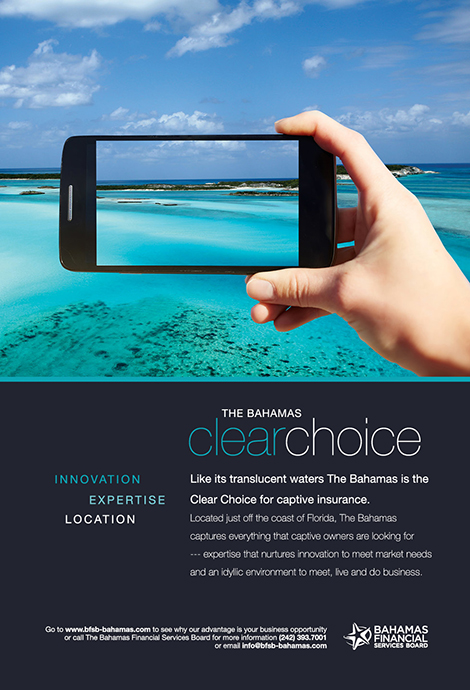Sam Komo of the Missouri Department of Commerce and Insurance, Alan Fine of Armanino, and John Talley of TAL Consulting discuss current market conditions for the captive industry in the state of Missouri, as well as the regulatory environment and emerging risks
With rolling plains extending into the Ozark Mountains at one periphery, and stretching above the Missouri River into the Pony Express route of the Old American West at the other, Missouri boasts the picturesque postcard landscape of the Midwest.
As the largest captive domicile in the Midwest, Missouri is part of the ‘Western Region’ alongside Arizona and Utah. The three domiciles jointly host the annual Western Region Captive Insurance Conference, while the National Association of Insurance Commissioners (NAIC) has its headquarters in Kansas City.
According to the Missouri Department of Commerce and Insurance (DCI), the state has issued 78 captive licenses, 52 of which were active as of 1 July 2021 — over half of which are owned by Eastern-based companies.
“Missouri understands the complexity of the captive market. That is why we look at multiple indicators to assess current conditions in Missouri and around the world,” explains Sam Komo, captive manager at Missouri’s DCI.
“Nationally, we found an ongoing increase in licensing, but a greater increase in inactive captives over the last three years. While Missouri has experienced a similar trend, it has not been to the extent we have seen nationally. For that reason, Missouri is on solid ground as it works to promote the programme,” he affirms.
Komo adds that the Missouri Economic Research and Information Center has estimated that all industries will see an increase of 4.5 per cent through to 2028, while agencies, brokerages and insurance-related activities have the potential to grow by as much as 11.4 per cent — “we believe the captive industry will be a dominant part of this growth,” Komo notes.
These market conditions are affirmed by John Talley, president of TAL Consulting, who says: “The market conditions for Missouri are at a high level. As with the rest of the US, rising prices for materials and inventory has caused businesses to reassess the cost of insurance — many are looking at a captive as a risk finance mechanism to keep insurance cost manageable and have greater control over claims procedures with their risk management programme.”
Market conditions for the captive industry in Missouri, and indeed internationally, continue to reflect the impacts of the COVID-19 pandemic.
Komo says: “Our world continues to evolve and so does the risk within it, thereby the captive industry will remain an option to address those challenges. Even as the COVID-19 pandemic proves to be one of the biggest challenges in generations, our society and the economy has continued to move forward. This same spirit is what drives people to look for solutions in uncharted territories, and makes the captive industry thrive in Missouri and the world.”
The pandemic is partially correlated with the “significant increase in interest” around alternative risk financing over the past 18 to 24 months, notes Alan Fine, tax partner at Armanino.
He explains: “Most commercial insurance policies contain exclusions for damages caused by communicable diseases. There are, however, many instances where business owners who had previously implemented a captive insurance strategy were able to submit successful claims payments, thereby providing their businesses with desperately-needed funds.”
Talley adds that the combination of the COVID-19 pandemic and the hardening market has caused Missouri businesses to explore captives for solutions that can provide them with much-needed financial stability and protection.
Described by Talley as “excellent for new captive formations”, the landscape of the captive industry in Missouri is as diverse as the state’s overall economy, according to Komo, encompassing insurance, financial services, health, banking and construction to name but a few.
He adds: “Missouri’s ability to think outside the box to support this diverse community is why the state is positioned for future growth in the industry. We look at every new captive as an opportunity to be innovative while moving the programme forward.”
Komo notes that to be successful in the current landscape, captive companies must be responsive to the needs of the customer and have the experience to find innovative solutions.
They must also provide opportunities that are financially sound and have flexibility within their laws to operate quickly and efficiently.
The captive industry in Missouri is facilitated by the Missouri Captive Insurance Association (MOCIA), which was formed in 2010 by experienced captive professionals in the domicile. MOCIA partnered with the Missouri captive department following the passage of domestication legislation to promote and support the new state law.
Fine notes that, in the future, MOCIA will explore suggested modifications to the state’s statutes to ensure sustained competitiveness as a domicile, noting that “we have tried to model ourselves after those jurisdictions which came before us and maintain the flexibility to serve the needs of the business constituents in our state”.
The Show Me state
The Missouri DCI regulates more than 2,000 insurance companies, the wide scope of which means the department has a great deal of experience and flexibility in administering insurance and reinsurance programmes. Captive structures available include pure, association, industrial insured, branch, sponsored, and special purpose life insurance captives.
These companies are regulated under the provisions of Missouri’s 2007 captive legislation, which was instrumental in allowing Missouri to become the largest captive domicile in the Midwest. The legislation determined that pure captives are not permitted to insure risks other than those of the parent or affiliated companies, while no captive is allowed to provide personal auto or home insurance coverage.
Furthermore, the law states that no captive is allowed to accept or cede reinsurance — however, they may reinsure workers’ compensation of a qualified self-insurance plan of its parent and affiliated companies.
“The stage was set in the beginning when we passed our first captive legislation in 2007, and expanded that legislation in 2013. Each stage in this process allowed the agency the needed flexibility to ensure we could view every application on its own uniqueness and merit, while still maintaining our commitment to regulatory requirements,” Komo explains.
“Some may ask why Missouri has not moved forward on new legislation in the past eight years. I would respond by saying the state already has the tools needed to develop groundbreaking advancements in the captive realm today.”
Komo adds that this does not mean that Missouri is not considering any future legislative updates. Rather, the domicile seeks to be proactive, rather than reactive, to the captive industry. In addition, DCI rules relating to insurance solvency and company regulation dictate that all captive companies must have an annual audit by an independent certified public accountant.
Fine says: “Missouri’s DCI, through the managers of the captive programme, has been very supportive not only of new formations but also redomestications to Missouri. The regulatory environment in Missouri compares favourably with other jurisdictions, as the regulators appropriately oversee the formation of captives and their ongoing activities without being overzealous in their oversight.”
“Missouri believes in regulation, but not overregulation, within the captive industry,” Komo summarises. He outlines the “simplistic approach” undertaken by the department in terms of fees, explaining that the US$7,500 licensing and $7,500 annual renewal fee are 100 per cent deductible from any premium tax, marking the domicile from its competitors.
With premium tax rates at less than 0.4 per cent (which cannot exceed $200,000), pure captives must directly write more than $2 million in premium to pay any taxes. In addition, examination costs are low as the DCI uses in-house examiners in a modified examination approach for pure captives.
“These factors are what bring service providers to Missouri and the reason this programme continues to grow. Data shows the captive industry in Missouri has the potential for growth, while the ongoing challenges around the world would suggest even greater opportunity for the captive industry moving forward,” Komo says.
Looking ahead
With this forward-thinking perspective in mind, Komo expects future health risk to be significant following the COVID-19 pandemic, particularly as this coverage represents 11 per cent of Missouri’s base financial risk (20 per cent when combined with banking and financial services). Other key emerging risks for the captive industry in general are cyber and environmental risk. The former is especially relevant following the pandemic, as Talley notes that the decentralisation of employers’ work locations has made organisations more vulnerable to computer networks and system cyber risks.
“Cyber liability can be more effectively tailored to meet the needs of the insured with a captive policy that is typically the case in the commercial marketplace — this is particularly important given the incredible pace of change in our technologies.”
Talley affirms: “Captive insurance companies have shown the ability to move quickly to provide the particular type of cyber risk coverage a business needs.”
Looking at Missouri specifically, Komo notes that the state “is always looking at emerging industries with unidentified risk and our pool of existing captives as we evaluate developing risk”.
He advises that a captive can best position itself to address emerging risks by “always [being] ready to identify conditions in the captive market in order to properly prepare your agency for unknown factors”.
Domiciles which are able to quickly engage with evolving market conditions will be best placed to explore opportunities to serve these emerging sectors — “and Missouri will be ready,” Komo concludes.





